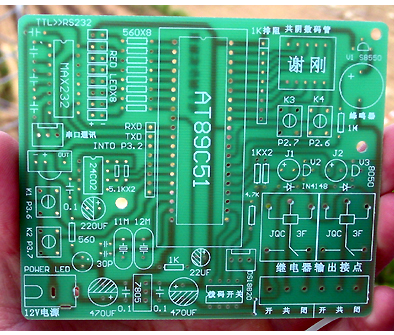This article introduces the classification of PCB printed circuit boards in detail from many aspects
high-quality PCB to realize its interconnection. This component contains the shielded signal line in the flat stripline flexible PCB, which in turn is an important component of the rigid PCB. In a relatively high level of operation, after the manufacturing is completed, the PCB forms a vertical S-shaped bend, thereby providing a way for the z-plane interconnection, and under the action of the x, y and z plane vibration stress, it can be placed on the solder joints Eliminate stress-strain. Let's take everyone to understand what are the classifications of PCB circuit boards:
What are the classifications of hand PCB circuit boards
1) A multilayer PCB is formed on a flexible insulating substrate, and the finished product is specified to be flexible: this structure usually bonds the two sides of many single-sided or double-sided microstrip flexible PCBs together, but the center The departments are not glued together, thus having a high degree of flexibility. In order to have the desired electrical characteristics, such as the characteristic impedance performance and the rigidity of its interconnection, each circuit layer of the PCB circuit board component must be designed with a signal line on the ground plane.

2) Multi-layer PCB is formed on a flexible insulating substrate, and the finished product can be flexible: this kind of multi-layer soft is made of flexible insulating material, such as polyimide film, laminated to make a multi-layer board. The inherent flexibility is lost after lamination. When the design requires a greater use of the insulating properties of the film, such as low dielectric constant, uniform thickness of the medium, lighter weight and continuous processing, etc., this kind of soft PCB is used. For example, the multi-layer PCB made of polyimide film insulating material is about one-third lighter than the rigid PCB of epoxy glass cloth.
3) Multi-layer PCB is formed on a soft insulating substrate, and the finished product must be shapeable, not continuously flexible: this kind of PCB circuit board is made of soft insulating material. Although it is made of soft materials, it is limited by electrical design. For example, for the required conductor resistance, a thicker conductor is required, or for the required impedance or capacitance, a thicker conductor is required between the signal layer and the ground layer. The insulation is isolated, so it is already formed in the finished application.
In order to have a high degree of flexibility for PCB circuit boards, a thin, suitable coating, such as polyimide, can be used on the wire layer to replace a thicker laminated cover layer. The metallized holes enable the z-planes between the flexible circuit layers to achieve the required interconnection. PCBs with good quality and excellent service are more suitable for designs that require flexibility, high reliability and high density.